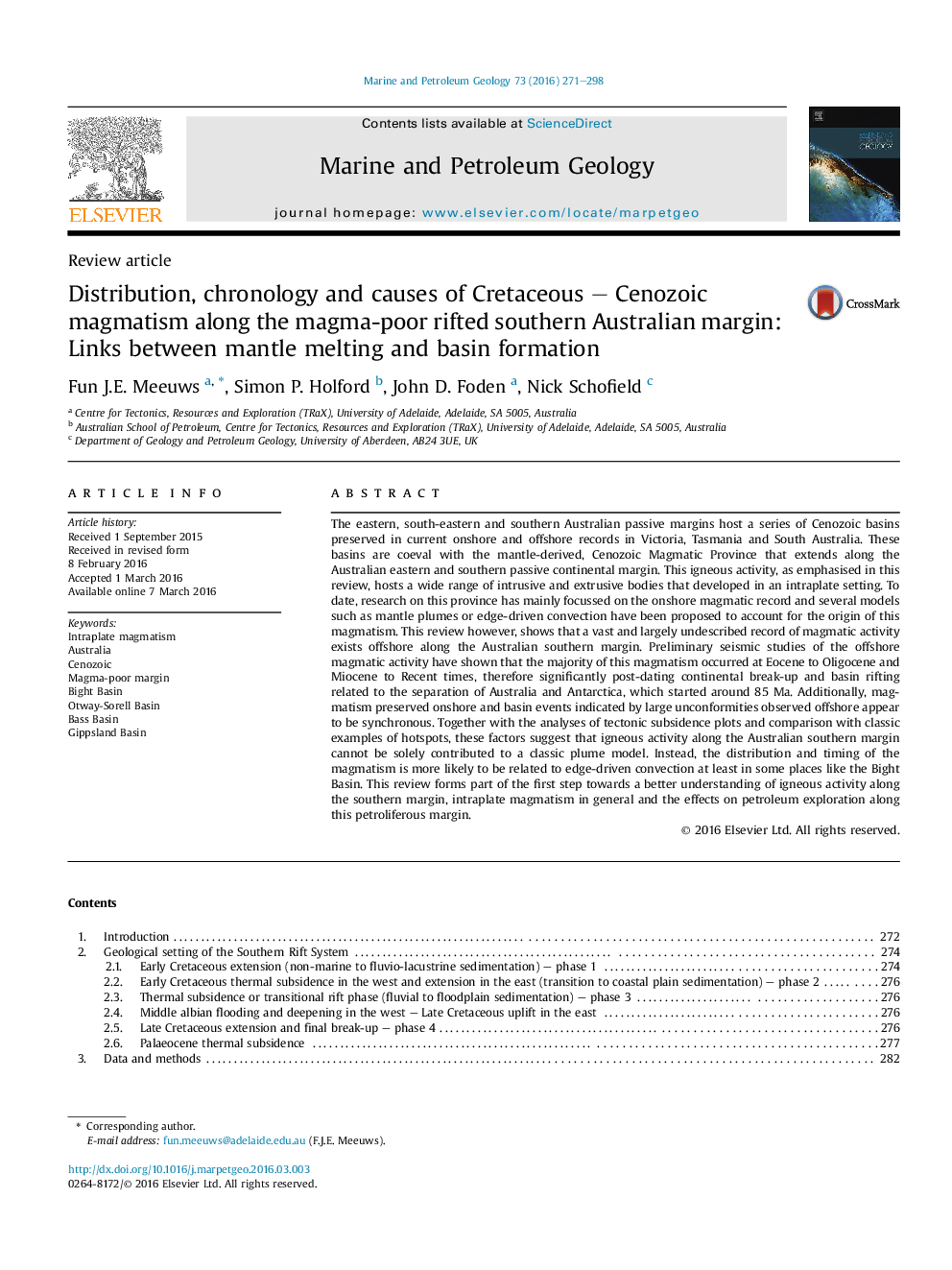| Article ID | Journal | Published Year | Pages | File Type |
|---|---|---|---|---|
| 6434800 | Marine and Petroleum Geology | 2016 | 28 Pages |
â¢The magma-poor Australian margin hosts many yet undescribed igneous features.â¢Offshore magmatism is younger than any break-up events along the margin.â¢Offshore magmatism does not fit with onshore magmatic age-trends.â¢No evidence was found for plume activity causing the offshore magmatism.â¢Clear links exist between Tasmanian magmatism and basin evolution in the bass basin.
The eastern, south-eastern and southern Australian passive margins host a series of Cenozoic basins preserved in current onshore and offshore records in Victoria, Tasmania and South Australia. These basins are coeval with the mantle-derived, Cenozoic Magmatic Province that extends along the Australian eastern and southern passive continental margin. This igneous activity, as emphasised in this review, hosts a wide range of intrusive and extrusive bodies that developed in an intraplate setting. To date, research on this province has mainly focussed on the onshore magmatic record and several models such as mantle plumes or edge-driven convection have been proposed to account for the origin of this magmatism. This review however, shows that a vast and largely undescribed record of magmatic activity exists offshore along the Australian southern margin. Preliminary seismic studies of the offshore magmatic activity have shown that the majority of this magmatism occurred at Eocene to Oligocene and Miocene to Recent times, therefore significantly post-dating continental break-up and basin rifting related to the separation of Australia and Antarctica, which started around 85Â Ma. Additionally, magmatism preserved onshore and basin events indicated by large unconformities observed offshore appear to be synchronous. Together with the analyses of tectonic subsidence plots and comparison with classic examples of hotspots, these factors suggest that igneous activity along the Australian southern margin cannot be solely contributed to a classic plume model. Instead, the distribution and timing of the magmatism is more likely to be related to edge-driven convection at least in some places like the Bight Basin. This review forms part of the first step towards a better understanding of igneous activity along the southern margin, intraplate magmatism in general and the effects on petroleum exploration along this petroliferous margin.
